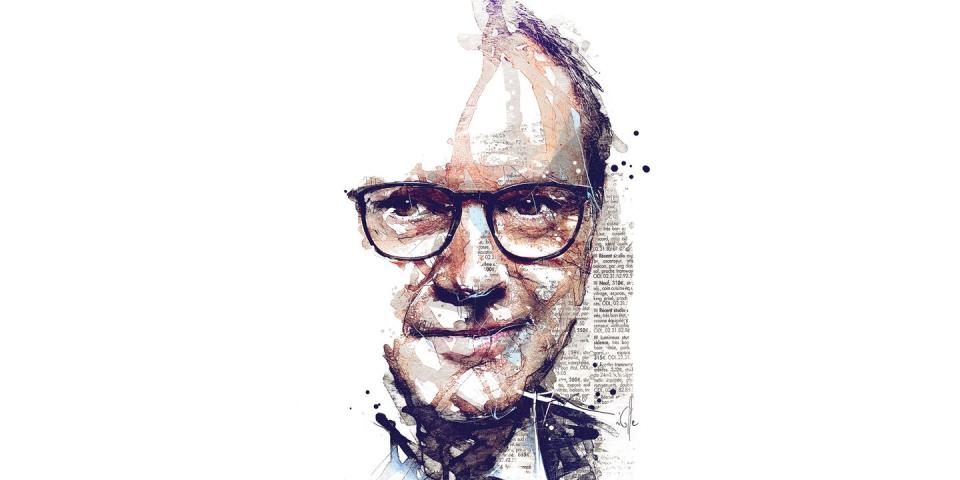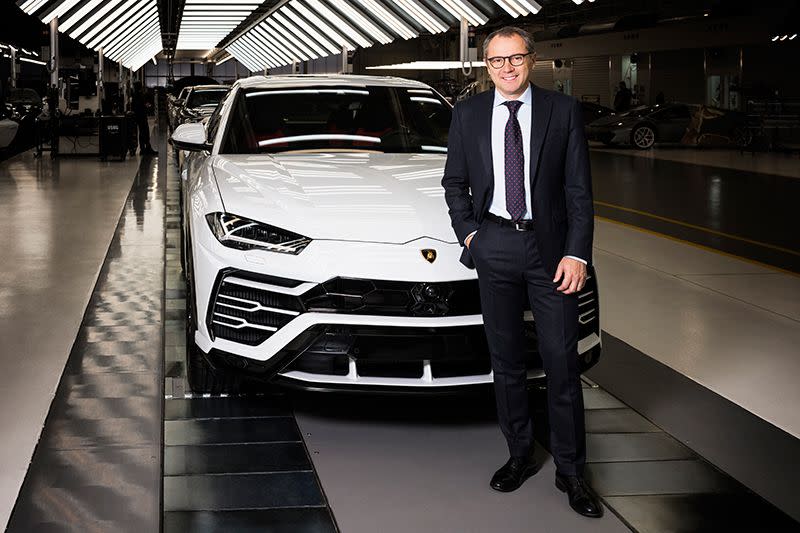Lamborghini CEO: Electrified Lambos Are Coming, F1's Halo Is Here To Stay

From the August 2018 issue
C/D: When you were a kid, did you dream of running a car company?
SD: I was born in Imola, so I was born at the racetrack. To be responsible for Ferrari racing and to be responsible for Lamborghini, I’m very lucky. I’m proud to be the only one who did [both].
C/D: How did you get your job at Ferrari?
SD: Very simple. When I was at university, I sent my CV to Ferrari and they took me.
C/D: Do you miss being in racing?
SD: I did that for 23 years. For me, it was an incredible experience. It’s part of my life, and I will never deny that. Ferrari will always be a reference for a lot of things-part of my heritage. Formula 1 is still in my blood because of my role also with the World [Motor Sport] Council of the FIA. But I’m totally committed to this next challenge with Lamborghini. My racing blood, it’s important to bring, let’s say, to this experience. In a way I don’t miss it, because I feel still a part of that world. Even though I’m in another business.
C/D: Was losing the worst thing to happen at Ferrari?
SD: When you lose-and you’re second by nothing, by a fraction-it hurts. It’s a physical pain. Really physical. But at the end of the day, you have to put always your face in front of everyone. You know you’re responsible for a team, that you have to protect everyone. I remember when we lost the last race at Dubai in 2010. One of our guys made a mistake. And you can imagine how he was. So I put my face on. That’s the right thing to do, even if it hurts. Believe me, these kinds of things make you stronger. It’s part of the experience. When you lose, it hurts.

C/D: You have hard decisions to make at Lamborghini and had hard decisions to make at Ferrari. How are they different?
SD: I used to say that “everyone is a very good Monday-morning quarterback.” Do you understand what I mean?
C/D: I’m an American.
SD: So you know on Monday what the game was on Sunday. Everyone is the best. The thing is to try to make a decision in a certain moment with information you have. I had to make hard calls. In 2010, when I had to ask Felipe Massa to let Fernando [Alonso] pass in Germany-that was a political decision, because looking from the perspective of the championship, that was enabling us to fight up to the end knowing we didn’t have the right car. At Lamborghini, a hard call like that? No. Hard call in terms of strategy? Hard call in terms of people? Hard call in presenting to shareholders what we believe? It’s part of my daily business.
C/D: Is it harder managing people on a race team or people in a car company?
SD: They have different perspectives. In a racing team, there’s the green flag. You have to go out. There are no excuses. If you miss that, it’s finished. Normally in the automotive business, there is not this kind of approach. [But] speed is a must and respecting the time of the schedule is a must. This is something that I try to transfer from my previous experience.
C/D: Can you have an electric sports car?
SD: An electric sports car? No.
C/D: Can you have an electric Lamborghini?
SD: We are going to have it, because that is the trend. But not in the short term. I think we’re talking about the end of the next decade. We need to be totally different from the other proposals. But, of course, we’re going to be hybrid soon. Because that’s the natural evolution keeping our V-10 and V-12 at the center of the project.
C/D: There are more exotic cars being sold now than ever before. Is the market saturated?
SD: We need to make sure that, in terms of quantity, we stay exclusive. And this is connected to the fact that you may have new markets coming in.
C/D: You’re on the F1 competition committee. The new halos for F1 drivers have been controversial. Could that rule change?
SD: I don’t think so. Now to go back on a safety device? Imagine if something happened afterward. It would be catastrophic. From the moment that decision was activated, there was no way back.
C/D: Who is your favorite racing driver of all time?
SD: All time, Michael Schumacher. He was able to see a scene frame by frame, [to see] what is the level of performance that is needed to be the maximum. He was inventing different switches to try to, in each part of the track, maximize the performance. He was able to extend the vision in slo-mo to maximize performance in each of the single frames.
C/D: Is there anything you would have done differently?
SD: What has been done in terms of strategy, I would have done the same way. And in the future, we are shaping, me and my team, the right thing for Lamborghini.
('You Might Also Like',)

 Yahoo Autos
Yahoo Autos 